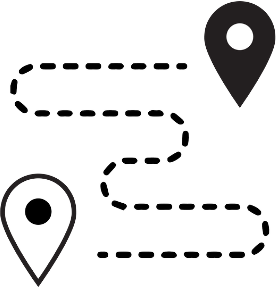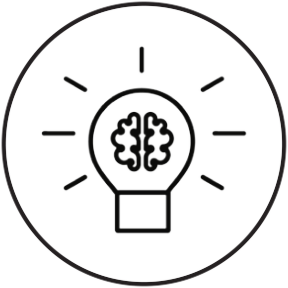For families navigating a rare disease, the road to answers can feel endless.
Appointments stack up. Symptoms multiply. Misdiagnoses can put parents at odds with their children’s doctors. And somewhere along the way, a child’s identity gets lost in the noise. All too often the symptoms come first, and the child comes second.
Getting a genetic diagnosis doesn’t just explain symptoms—it gives families something even more valuable: the space to be a family again. It shifts the focus away from endless appointments, uncertainty, and guesswork—and back onto childhood, connection, and joy. It puts a name to the unknown, helping families understand what they’re facing and how to move forward. With that clarity comes a shift: from managing symptoms to understanding needs, from reacting to advocating. A diagnosis becomes a framework for support, a catalyst for compassion, and a powerful reminder that a child is never defined by their condition, but seen more clearly because of it.

But what if that clarity takes years to find? What if symptoms keep stacking up with no explanation? What if the labels don’t fit—or worse, cause harm?
That’s where so many families find themselves. And that’s where the real story begins.
Waiting for answers takes a toll—on patients and their families. The average diagnostic journey for a child with a rare disease spans five or more years.1 That can change the course of a childhood and define its earliest days–filled with uncertainty, stress, and often misdirected care. And it doesn’t just affect the child—it echoes through the entire family.

“I would never wish those seven years I spent searching for a diagnosis on anyone.”
—Ashley, mother and caregiver
In the absence of a diagnosis, kids are too often defined by uncertainty—labeled as “complex,” “unclear,” or “puzzling.”
And while these words reflect the uncertainty surrounding a child’s condition, they do little to capture who a child really is: a sibling, a student, a storyteller, a dreamer.
These words can keep families stuck in limbo—managing symptoms without understanding the cause. Without answers, care becomes trial and error. And life starts to revolve around appointments, uncertainty, and what-ifs, rather than birthdays, playdates, and ordinary joy.
Faced with persistent uncertainty, more families are speaking up. They’re advocating fiercely, asking harder questions, and challenging assumptions. Because they know–sometimes instinctively–that there’s more to the story.

When the textbook doesn’t match the child in front of them, moms like Sarah are pushing for genetic testing to get the clarity their children deserve. After years of searching, she insisted on a genetic test for her child–and finally got the precise diagnosis they needed. “At one point in our diagnostic odyssey, it was recommended we stop testing and searching for a diagnosis–that they [the medical community] felt they [the child] had been through enough. I knew of the exome testing and really felt we would find an answer there,” Sarah says.

1 in 10 people have a rare disease—many of them babies and children.2
What happens when you finally get answers? You open the door to more precise treatment plans and targeted interventions.
After Lilly received her genetic diagnosis in 2012, everything changed. It opened the door to new treatment options tailored to her condition—treatments that made a real difference. In 2020, after years of taking anti-seizure medications, she was finally able to stop them and begin a therapy that aligned with her diagnosis.
Until then, she described her brain as feeling “underwater” and “in slow motion.”

Getting the right diagnosis didn’t just change her care, it gave her the chance to feel more like herself again. It became the turning point in her journey, and the start of moving forward with clarity.
Beyond the clinical value, a diagnosis gives families something they’ve often gone without: time. Time to stop chasing referrals. Time to stop second-guessing care. Time to focus on milestones, routines, and memories instead of medical mysteries.
These aren’t just stories of diagnosis—they’re stories of what becomes possible after. Of kids going to kindergarten, playing sports, swimming for the first time. Of families finally able to exhale, stop searching, and start living.
“Today Evelyn is learning sign language and loves kindergarten,” Evelyn’s mother, Ashley, shares. “She’s a big reader and a little adventurous.”
“We got to take Simon swimming in a river and a lake for the first time, which was completely off-limits until recently,” says Simon’s mother, Sandie.
“I play basketball, football, lacrosse and jiu-jitsu,” Sully tells us—with no mention of his diagnosis.
Learn how genetic testing can help families move beyond uncertainty toward a clear path forward.

Share your story with other families
References: 1. Marwaha S, et al. Genome Med. 2022 Feb 28;14(1):23. doi: 10.1186/s13073-022-01026-w. 2. National Organization for Rare Disorders (NORD). Rare Disease Day: Frequently Asked Questions. Retrieved June 12, 2025. https://rarediseases.org/wp-content/uploads/2019/01/RDD-FAQ-2019.pdf